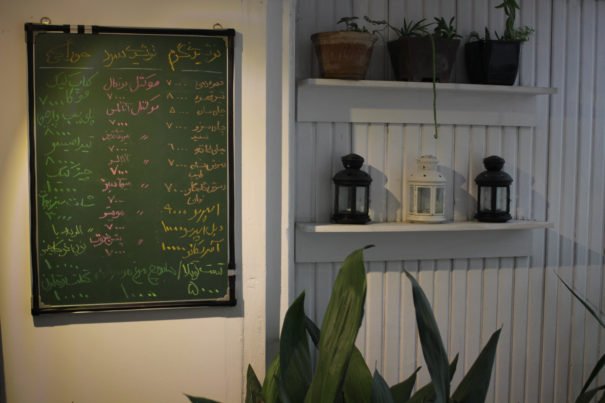
Even a Droplet of Good News Makes a Lack of Alcohol Tolerable

Even a Droplet of Good News Makes a Lack of Alcohol Tolerable
Virgin Mojitos in Tehran
I stood in a corner of the gallery’s rooftop terrace, watching the locals and waiting for a concert to begin. All of the guests appeared to be in their 20s, and most of them seemed to subscribe to the same style-bible as the arty youngsters in hipster capitals worldwide: jeans, skinny; plaid shirts, crumpled; hair, messy.
Despite the familiar feeling of being the gallery’s least-fashionable guest, there was no doubt I wasn’t home in Berlin anymore. The women’s hair was covered—however creatively—by headscarves, which were discreetly being pushed back to reveal more hair. The drink in my hand was a virgin mojito, all lime and mint and not a trace of rum. And just behind the gallery, the Alborz mountains rose sharply, giving Tehran its dramatic backdrop. The polluted chaos of downtown Tehran, with its frenzied traffic, traditional bazaars, and morality police enforcing religious rules, seemed further away than the one-hour drive it had taken us to get here.
We’d been picked up by the organizer of that night’s concert, which was part of the SET festival for experimental music. He had invited my boyfriend to play when he’d heard we were traveling to Iran, and on the drive to the gallery he had told us about recent developments in the music scene. He said there were fewer restrictions, venues were getting fewer visits from the morality police, and female vocalists—who have been banned from solo performances for mixed audiences since the 1979 revolution—were being tolerated.
As I made my way to the bar for another drink, I struck up a conversation with a musician, Sara, who had performed at the gallery the night before. She looked like a rock star: short hair, small scarf, red lips, and golden glasses. “The independent scene is improving rapidly, and the audience is growing. It’s a very young, curious, open-eyed audience and a very lively, hopeful scene,” she said.
Babak Baharestani, the owner of the gallery, agreed. From behind the bar, he was watching the group of youngsters with a content look on his face. He’d opened the gallery to bridge the gap between the contemporary art scene and the public, and he had reason to believe he was succeeding. “When I was a student about 10 years ago there were perhaps five or six active galleries, some of them governmental. Today, the number of galleries in Tehran is around 40 or 50, and almost all of them are private,” he said.
Like other people on the art scene, he attributed part of its scene’s growth and energy to the easing of religious rules, and also, like others, he didn’t seem that surprised. The relaxation of the stifling rules had been cautiously expected. The relatively moderate president, Hassan Rouhani, was elected three years ago after pledging to ease political and cultural restrictions, and offering Iranians more liberties in their daily lives. Still, the reports that some religious rules were being relaxed, and Iran’s improved relations with the West following last year’s nuclear deal, were pleasant droplets of good news in a year that’s been a torrent of bad news.
The doors to the concert space opened, and as I watched the energetic crowd fill up the space, I finished my second drink. I didn’t even mind that it wasn’t alcoholic.